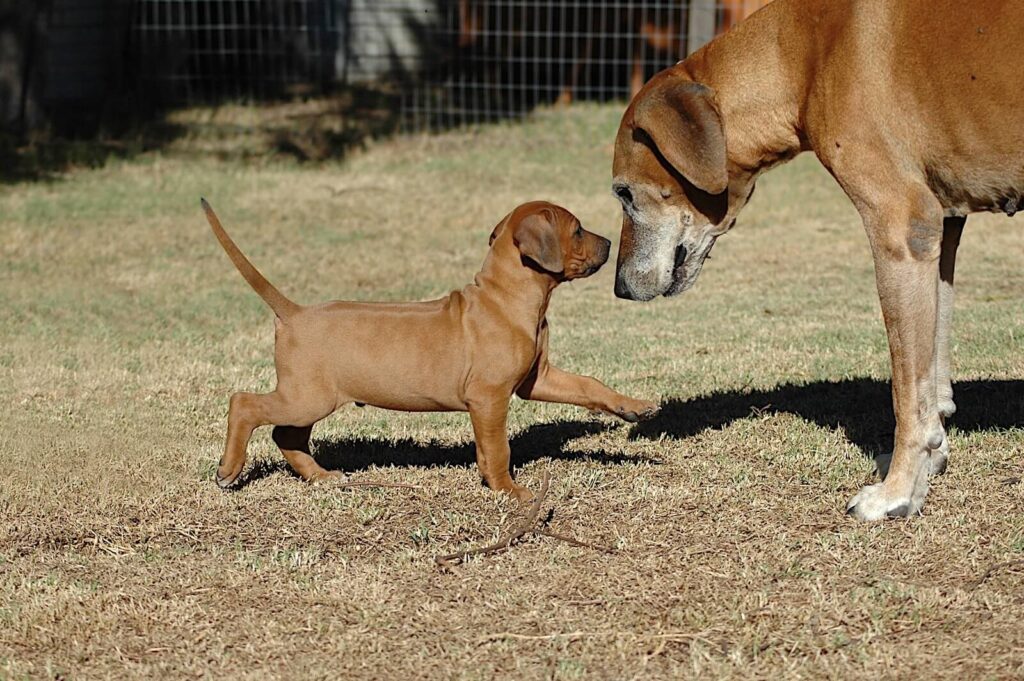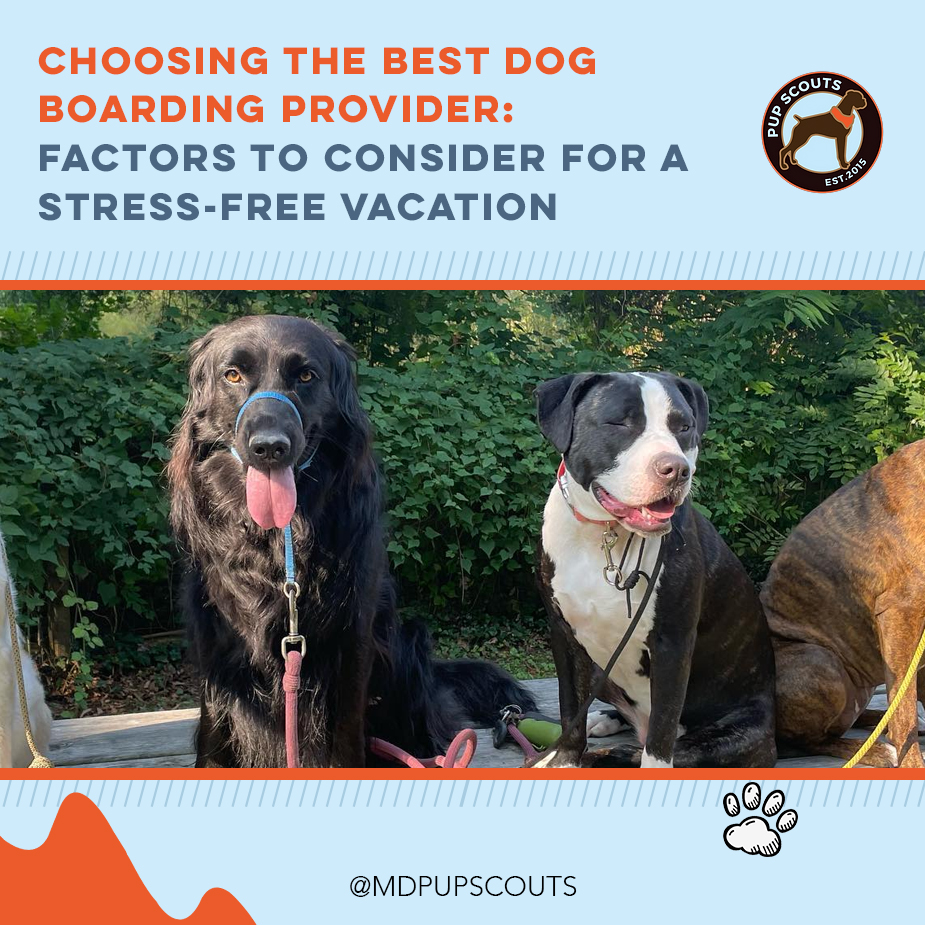It’s no surprise that there’s been a lot of talk on social media and podcasts about socializing your dog. The necessary isolation brought on by the COVID-19 pandemic left many dogs without opportunities to be among their peers. Treated by some as a magic bullet for anything from leash pulling to counter-surfing, all of the information out there can have you wondering what’s best for your dog. My favorite place to start is always the beginning, so let’s dive in!

What is socialization? As a highly social species, we humans are all too aware of the importance of being around others and the inherent mental and physical risks linked to isolation. We are all painfully cognizant of the risks and faux pas that come with not conducting ourselves in the way society expects. We also experience a sense of safety and comfort when we know how to handle a given situation and unease when we are out of our comfort zone. Our dogs are no different from us in any of these respects, and unfortunately, they don’t have Emily Post to guide them through the art of etiquette.
What does it all mean?
It means that supervised interactions between well-matched dogs are beneficial to their overall well-being and crucial for giving your dog a sense of comfort and safety during their daily life. Like High Schoolers, dogs rely on feedback from their peers to teach them how to behave in ways other dogs find acceptable. Once they know all the “rules” of how they are supposed to act, they can relax and have fun because they aren’t worried about being punished for breaking a norm. Usually, the best teachers are the older students.

In fact, feedback from well-socialized dogs is one of the most valuable teaching tools for puppies that we have. A well socialized dog can tolerate a puppy’s annoying behavior to a point, and when the puppy crosses the line, we can expect the dog to correct the puppy, doing so in a way that communicates their dissatisfaction without risking the safety of either dog. But Fido cannot teach anyone manners that he doesn’t have. Pairing two unsocialized dogs together is a recipe for miscommunications, frustration, and potential fights. This is why it is always important to monitor interacting dogs, especially if they’ve never met.
A rich socialization history gives a dog, among other things, a wide variety of communications to add to its repertoire. This is crucial to avoiding potential tiffs amongst dogs because it gives them basic conflict resolution skills. A dog that can effectively communicate to its fellows that it is upset or stressed will not need to resort to “fight” because his skills give him the option of “flight.” A dog that has not learned to display his fear or alarm may seem still or calm on the surface, but they are simply unable to express itself. These are the dogs that people say, “Just went crazy!” because the dog didn’t have any tools in their toolbelt to deal with their situation. On the flip side, a dog that has learned to be a social butterfly tends to watch its fellows for cues and will usually even pick up a behavior or two from a model student.
Socializing your Adult Dog
While our formative years are often crucial to developing the social skills necessary later in life, it is never too late to learn. The same is true of dogs. An adult (or even geriatric) dog can still make new friends, learn new social skills, and learn new tricks! However, much like parents who don’t want their kids “hanging out with the wrong crowd,” we want to socialize our dog with other dogs that exemplify the manners we are looking for.
Useful Tips:
Pairing them with other dogs of a similar energy level and temperament.
Allow your dog to escape if need be. We want “flight” to be an option.
Start with one other dog that has more refined social skills than your dog.
Play sessions should occur in a neutral area, anywhere outside of your immediate neighborhood.
Keep sessions short! Sessions should be 20-30 min, allowing time for breaks, and always leave your dog wanting more.
Allow the other dog to use vocalizations to correct your dog with as little human interference as possible. This feedback will shape how your dog interacts with others; each play session will allow your dog to feel more confident and begin to generalize that behavior to other dogs!
Common Issues with Socializing and How to Get Around Them:
Resource Guarding – If your dog tends to be possessive of food or toys, it’s best to avoid interactions where these things are present. Resource guarding is often rooted in a lack of confidence, so you may see these behaviors ease with proper socialization. Conversely, socialization with other resource-guarding dogs can and will intensify guarding behaviors in both dogs. Note: if your dog resource guards people, it is best to get yourself in the hands of a qualified trainer to assist with de-escalating that behavior.
Health: If your dog deals with issues such as hip or joint pain or is simply in their geriatric phase of life, socialization is still crucial to its well-being. However, those health factors mean that you have to monitor a few extra things when they’re interacting with other dogs. Keep an eye out for the physical signs of pain in dogs (whimpering, panting, flattened ears, shaking, etc) and end the session if you see those signs. Often the safest way to do this is to pair them with a dog in a similar phase of life or a dog that they are markedly larger than. Additionally, older dogs don’t see as well as they used to, and they can become easily startled by motion. If your dog is starting to lose their sight, you may want to pair them with a slow moving partner like a bulldog or bloodhound. Don’t forget to keep those sessions short and low-impact. If you do, your older dog will look forward to the next one like a puppy!
Threes’ a crowd: Dogs that are a bit more unsure of themselves often play well with one well-matched partner. However, adding a third dog is often wildly detrimental to our socializing efforts. When three dogs play, one is often left out. The third wheel will usually exhibit attention-seeking behaviors of escalating intensity which can create stress in the group. Try to keep your initial efforts to two dogs.
Socializzzzzzzz: Dogs, like most babies and some adults, can get cranky when they’re tired. Most dogs need 17 hours of beauty sleep daily, and some are less tolerant towards the evening. Studies show that efforts toward socialization and inuring dogs to aversive stimuli are more effective in the morning hours.
THE DOG PARK
As a rule, I am against the dog park as a socializing aid. They are unsupervised, the dogs are unknown, and there are too many variables for me to be confident that the dog will be successful and safe. Supervised playtime is available at some doggy daycares, but this is still largely unstructured. However, this does not mean that group socializing is detrimental, but we should examine our thinking about what we want from group socialization. Individual socialization helps your dog grow confident around other dogs and helps them effectively navigate their interactions with them. The aim of group socialization should be to help your dog ignore distractions and maintain calm even when exciting things happen in the room around them.
PACK DOG WALKS

A benefit to the pack walk is the building of tolerance and companionship with other dogs. Pack walking looks very purposeful because it is, and when the dogs are all on the same mission, they start to act like teammates. Pups that are otherwise less tolerant of other dogs tend to strengthen that mental muscle during pack walks because they are goal oriented. That resiliency will make its way into other areas of a dogs life! So while the dogs may not do much direct socializing on the pack walk, there are a myriad of social benefits for the dog. (See our next post on the power of the pack)
I have had the benefit of working with several group classes over the years. There are all sorts of group classes that you can take with your dog: canine scent work, schutzhund, flyball, dock diving, lure coursing, etc (for details on local dog sports, please reach out to dominic@mdpupscouts.com). These classes offer an amazing opportunity to strengthen your bond with your dog. Additionally, these groups will teach your dog to focus on you in distracting environments and to keep their composure in situations where they otherwise wouldn’t have been able to. Canine sports have given many owners a whole new dog!
To summarize, while proper early socialization is key to a calm and well-mannered dog, it’s never too late to teach your pup some etiquette! Choosing the right playing partner, environment, and even time of day will help you give your dog character-building playdates. Also, while three dogs can sometimes be a crowd, a whole group of dogs in a class is a sight to behold.
You can reach out to us at any time on the website or via the emails above. Happy Socializing, and tell your dog I said Hi!




